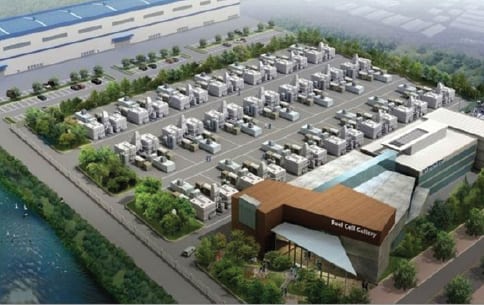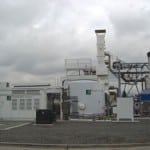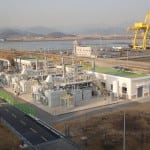In October, Canadian biogas power producer Anaergia opened a 2.8-MW fuel cell system powered by cleaned and conditioned wastewater biosolids at a municipal water treatment facility in Ontario, Calif. The RP-1 Water Recycling Facility treats up to 44 million gallons a day of wastewater, and the new renewable energy facility installed onsite will offset about 60% of the grid power previously used by the facility to treat wastewater, Anaergia said.
Power from the DFC3000 stationary fuel cell power plant recently purchased from FuelCell Energy is being sold to the wastewater treatment facility’s owner, Inland Empire Utilities Agency (IEUA), a municipal water district located in western San Bernardino County, under a 20-year power purchase agreement. Environmental rules prohibit the utility from releasing methane-rich biogas generated by the wastewater treatment process directly into the atmosphere. Because flaring the gas emits pollutants, IEUA has been using digester gas to provide a fuel for cogeneration engines that provide energy to other processes within the facility.
The fuel cell plant requires only “minimal cleaning” of the biogas, says its manufacturer FuelCell Energy. Biogas “contains humidity, sulfur and CO2. Prior to being used as a fuel source for the Direct FuelCell, the humidity and sulfur must be removed, but the DFC technology does not require the removal of the CO2. This is a cost advantage as pipeline quality biogas, also termed ‘directed biogas,’ must have the CO2 removed prior to being injected in the gas pipeline, which is an energy-intensive process and adds cost.”
Essentially, the fuel cell plant uses an electrochemical process to efficiently generate electricity and heat suitable for generating steam. According to FuelCell Energy, fuel cells are “highly efficient” and can achieve efficiencies up to 90% when byproduct heat is utilized. “The byproduct heat from this power plant will be used to help create the renewable biogas by heating the anaerobic digesters that produce the biogas. High efficiency decreases energy costs and provides more electrical output from the same amount of biogas than less efficient alternatives,” the company says.
The IEUA lauds the project as a major development that will bring it closer to its goal of going “Gridless by 2020,” allowing it to operate completely off the grid during peak energy usage periods.
A renewable mode of generation promoted less fiercely than solar, wind, and hydro, fuel cell power plants have been gathering clout over the past decade. Cost and technology are still hurdles, and the industry, hard-hit by the economic downturn, has struggled to achieve pricing parity with other technologies. Meanwhile, current federal tax credits provided to fuel cell makers ($3,000/kW or 30% of the capital cost) are set to expire in 2016.
Around the world, however, fuel cell power is making strides. South Korea leads the charge in many respects: The nation’s capital, Seoul City, has plans to support installation of 230 MW of stationary fuel cell power plants—part of its plan to replace the capacity of one nuclear power plant—a project that could see 29 fuel cell parks totaling 190 MW and 102 commercial building installations totaling 40 MW by 2014.
 |
| 2. Fuel cell frenzy. A 60-MW fuel cell park (shown in this rendering) is under development by POSCO Energy along with partners Korea Hydro Nuclear Power Co. and Samchully Gas Co. The fuel cell park will consist of a series of FuelCell Energy DFC3000 power plants located in an industrial complex in Whasung City. Electricity generated by the fuel cells starting in 2013 will be supplied to the grid and assists the partners with compliance under the South Korean Renewable Portfolio Standard. Courtesy: FuelCell Energy |
This November, FuelCell Energy announced it had received an order for 121.8 MW of fuel cell kits and other services from its South Korean partner POSCO. POSCO and FuelCell are already under contract to build the world’s largest fuel cell park—a 58.8-MW project located in Whasung City, Gyeonggi Province, South Korea—starting in early 2013 (Figure 2). The project—co-owned by Korea Hydro & Nuclear Power Co. Ltd., Samchully Co., and other financial investors—stems from an ambitious renewable portfolio standard adopted by the country in 2012. The heat generated by the fuel cell power plants will be supplied to a district heating system for local use.
—Sonal Patel is POWER’s senior writer.








